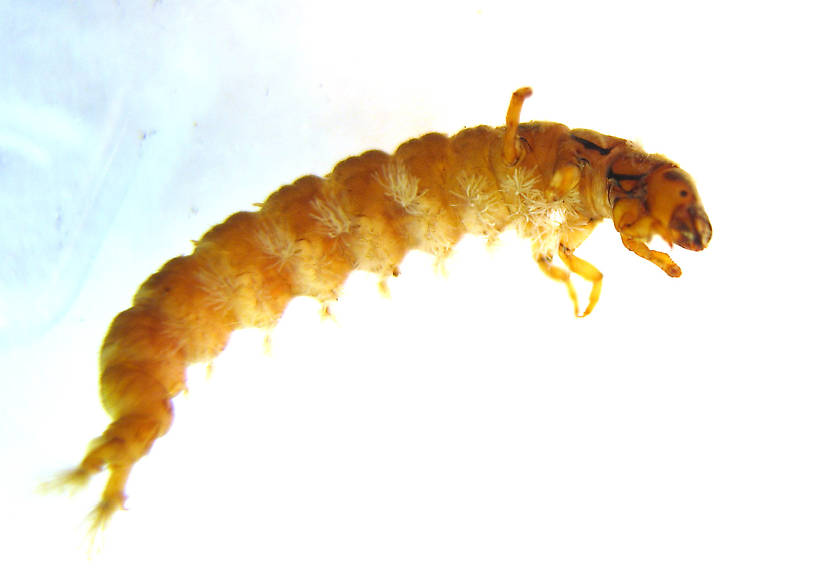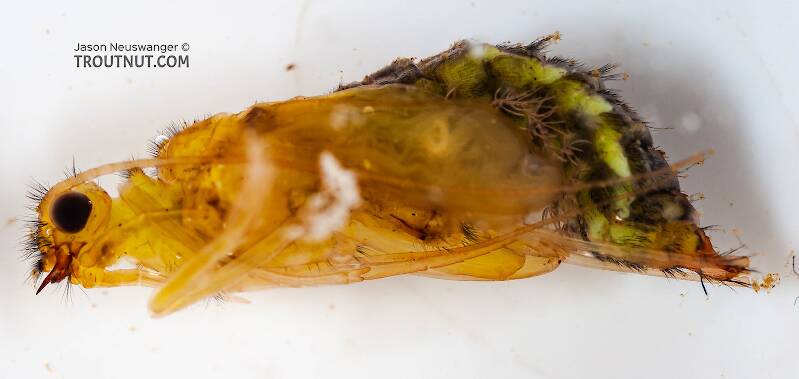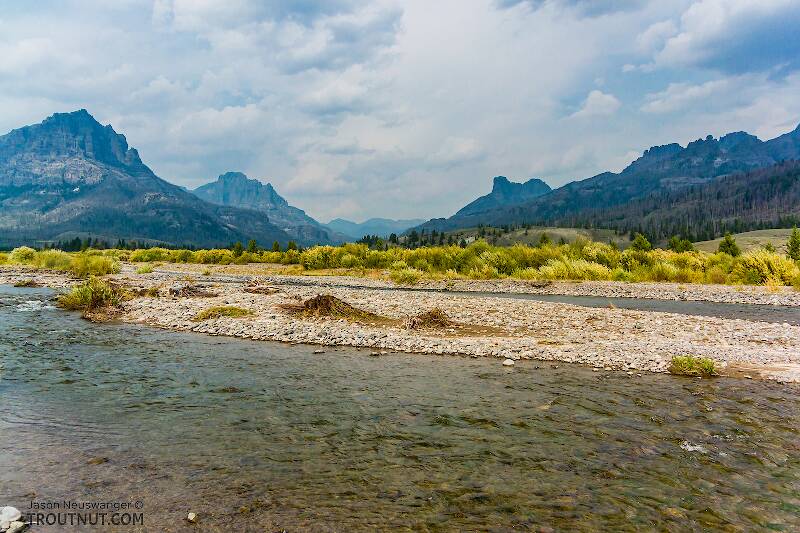
Hex Mayflies
Hexagenia limbata
The famous nocturnal Hex hatch of the Midwest (and a few other lucky locations) stirs to the surface mythically large brown trout that only touch streamers for the rest of the year.
Featured on the forum

This dun emerged from a mature nymph on my desk. Unfortunately its wings didn't perfectly dry out.

Troutnut is a project started in 2003 by salmonid ecologist Jason "Troutnut" Neuswanger to help anglers and
fly tyers unabashedly embrace the entomological side of the sport. Learn more about Troutnut or
support the project for an enhanced experience here.
Spotted Sedges
Like most common names,"Spotted Sedge" can refer to more than one taxon. They're previewed below, along with 3 specimens. For more detail click through to the scientific names.
Caddisfly Genus Hydropsyche
These are often called Spotted Sedges.
The most important genus in the most important family of caddis.
More to come - Page in edit mode.
More to come - Page in edit mode.

Size - 14 mm
Condition - preserved
Habitat - cobble bottom, moderate flow run, at a depth of approx. 1 1/2 feet.
Key Characters - pair of large prosternal sclerites
This is a very common taxon at this location. I collected using a kick net. In life, it is bright olive green ventrally, shading to a dull olive at its dorsal abdominal surfaces. In the hand, the legs, thoraxic regions, and head appear medium chocolate brown. The stark contrast of the thoraxic plate's dark edges and light legs are effects of preserving. The plumouse anal hooks were duck down gray, not the color of the gills as appears in the preserved specimen.
The Lower Yuba River is a good habitat for this species, being a larger river with an open canopy. The Feather River just to the north of the Yuba system also finds H. californica in abundance. The other common Hydropsyche species in the area, Hydropsyche occidentalis, seems to prefer smaller, shaded streams.
Entoman
Condition - preserved
Habitat - cobble bottom, moderate flow run, at a depth of approx. 1 1/2 feet.
Key Characters - pair of large prosternal sclerites
This is a very common taxon at this location. I collected using a kick net. In life, it is bright olive green ventrally, shading to a dull olive at its dorsal abdominal surfaces. In the hand, the legs, thoraxic regions, and head appear medium chocolate brown. The stark contrast of the thoraxic plate's dark edges and light legs are effects of preserving. The plumouse anal hooks were duck down gray, not the color of the gills as appears in the preserved specimen.
The Lower Yuba River is a good habitat for this species, being a larger river with an open canopy. The Feather River just to the north of the Yuba system also finds H. californica in abundance. The other common Hydropsyche species in the area, Hydropsyche occidentalis, seems to prefer smaller, shaded streams.
Entoman

Several users have interesting comments in the discussion of this specimen, but this observation by Creno is especially good:
Also, this is what I would call an "immature" pupa. The wingpads of caddis pupae darken to nearly black as the enclosed adults near emerging. The darkening is the developing adult wing inside the pupal wing pad. The ultimate coloration of the adult wing is not very apparent in most pupal wing pads as the majority of the adult wing coloration comes from the color/position of the adult wing hairs and setae. But dark pupal wingpads are a good indication that the emergence will occur very soon, likely that day or so, and that the adult parts are sufficiently developed within the pupae to make a species determination from the specimen, particularly if it is a male.
See 10 more specimens...
Caddisfly Genus Ceratopsyche
These are sometimes called Spotted Sedges.
This genus has been proposed off and on for years. For reasons beyond the scope of this hatch page to explain, it briefly had most of the important species of the most important genus Hydropsyche in its fold. They have all been moved back and the name Ceratopsyche is no longer valid.


